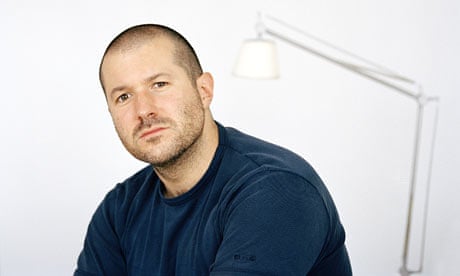It looks clunky, even clumsy compared to the more evolved versions that followed. But when the first iPod was launched at Apple's headquarters in Cupertino, California on 23 October 2001, it was revolutionary. "This is a major breakthrough," Apple boss Steve Jobs said, gazing into the future. And set against the digital music players then on the market, the iPod was a revelation. The others were fiddly, trivial-looking plastic things cluttered with buttons and dials, appealing mainly to gadget-obsessed geeks with the time to figure out how to work them. In contrast, the iPod was a sleek digital jukebox that fitted snugly in the palm of your hand; it could hold one thousand songs – to begin with – and allowed you access to them in just a couple of clicks of its elegant navigation wheel. If you cared anything at all about music, as soon as you held it and understood how easy it was to use, you wanted one. It changed everything.
Like a lovesick spouse who refuses to believe the honeymoon is over even after the divorce papers have been served, the big music labels stubbornly club to the notion that we'd all prefer the sound quality of a CD to the convenience of digital. Apple has shown just how wrong that assumption was by selling 220m iPods worldwide, and more than 8.5bn downloads via its online iTunes store. We all now routinely carry huge libraries of music around on our phones and the music industry, meanwhile, is almost unrecognisable: a worried, slimmed-down shadow of its former bloated self.
"It could have been shaped like a banana if we'd wanted," said Jonathan Ive, Apple's senior vice president of industrial design, when we talked about the first iPod. That it works so well with your computer and the online store, is down to the iTunes software. That it is simple to use and just so damn desirable is down to Apple's small, close-knit design team, led by Ive, a 42-year-old from Chigwell in Essex. He once showed me a notebook in which he had sketched every possible knob, lever, button or control device before settling on the idea of the wheel, and everything on an Apple product is similarly considered, explored, improved and designed to be as easy and as uncluttered as possible.
Ive has a talent for imagining beautiful things that work with minimal hassle. He changed home computers in 1998 with his translucent iMacs, and has continued to shape the way we work and play, most recently with the iPhone. Most of the products he creates with his team are radically new. Often, we've never seen anything like them. But it is part of his genius that he empathises with the user, guiding us by look and feel so that almost instantly, what was shockingly new seems familiar. (With the first iPods, pictured, the screen and wheel were arranged on the front to look like a stereo speaker, subtly telling us that this device was all about the music.)
"Making the solution seem so completely inevitable and obvious, so uncontrived and natural – it's so hard!" he smiled, when we first met at Apple HQ seven years ago. "But that is what we're trying to do here." We have talked several times since, and his enthusiasm for this technology is genuine, as is his passion for music: he is proud of the fact that the design studio has by far the loudest sound system in the company, and they rarely work without it playing at full volume. He is probably the best product designer in the world and certainly the most influential, but finds media attempts to glamorise him as "the Armani of Apple" embarrassing. He lives quietly in San Francisco with his wife Heather – whom he met while taking his degree in industrial design at Northumbria University – and their twin five-year-old boys. He is so low-key that his friend, the DJ John Digweed, had known him for some time before he realised that Jony didn't just work in the design department at Apple – he ran it, and was a senior vice president of the company.
After college, Ive started a design consultancy in London, joining Apple in 1992. But it wasn't until 1997, when Steve Jobs returned to the company he had founded, that Ive and his team were allowed to really show what they could do. Jobs had a clear – and at the time very radical – vision of the home computer as a digital hub, the place where you created, stored and viewed everything from photos and video to music and movies. The first iMac came out the following year, transforming personal computers overnight from grim beige boxes to sleek home accessories, and Ive has continued to set the agenda ever since.
With the first iPod, there was nothing to distract you from your music except a pause button, a headphone jack, and a single port to recharge and/or input data. It was a stunning feat of engineering, with Ive's trademark attention to detail: the serial number is individually etched onto each unit to avoid an ugly paper sticker, and the wire twists that usually secure cables when you first get them out of the box have been replaced by neat clips. This doesn't necessarily cost more, he points out. You just have to care. And he does, obsessively. Once it was decided that the first iPod would have a white front to match Apple's range of home computers and laptops, the headphones had to be white as well. At the time, this was unheard of. "People said, 'You can't do white headphones, nobody does white!'" he laughs. "But I thought it was really nice."
Ive works closely with Jobs, but few other company employees are allowed to see what he's doing behind the tinted windows of his studio. In an industry where ideas are the main commodity, Apple guards its secrets jealously, and never discusses new products until the moment they are on sale. Now that he has fulfilled a long-term ambition to create a phone, it's hard to guess what Ive will come up with next, although a tablet computer has been rumoured for some time. What is pretty certain, however, is that we will really, really want one.









Comments (…)
Sign in or create your Guardian account to join the discussion